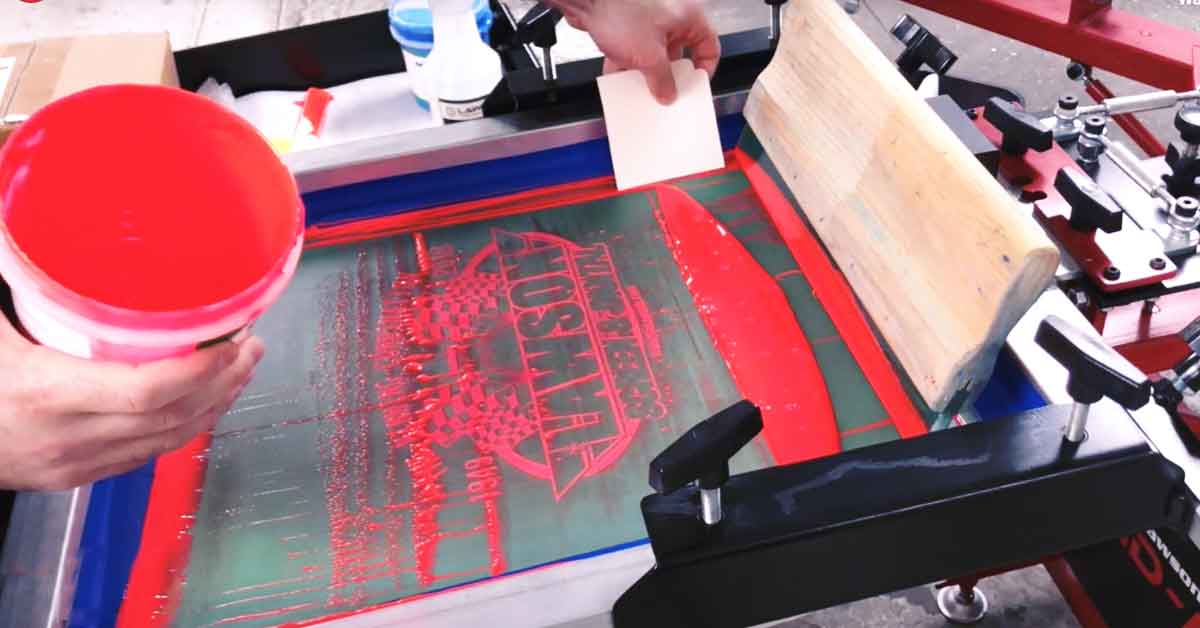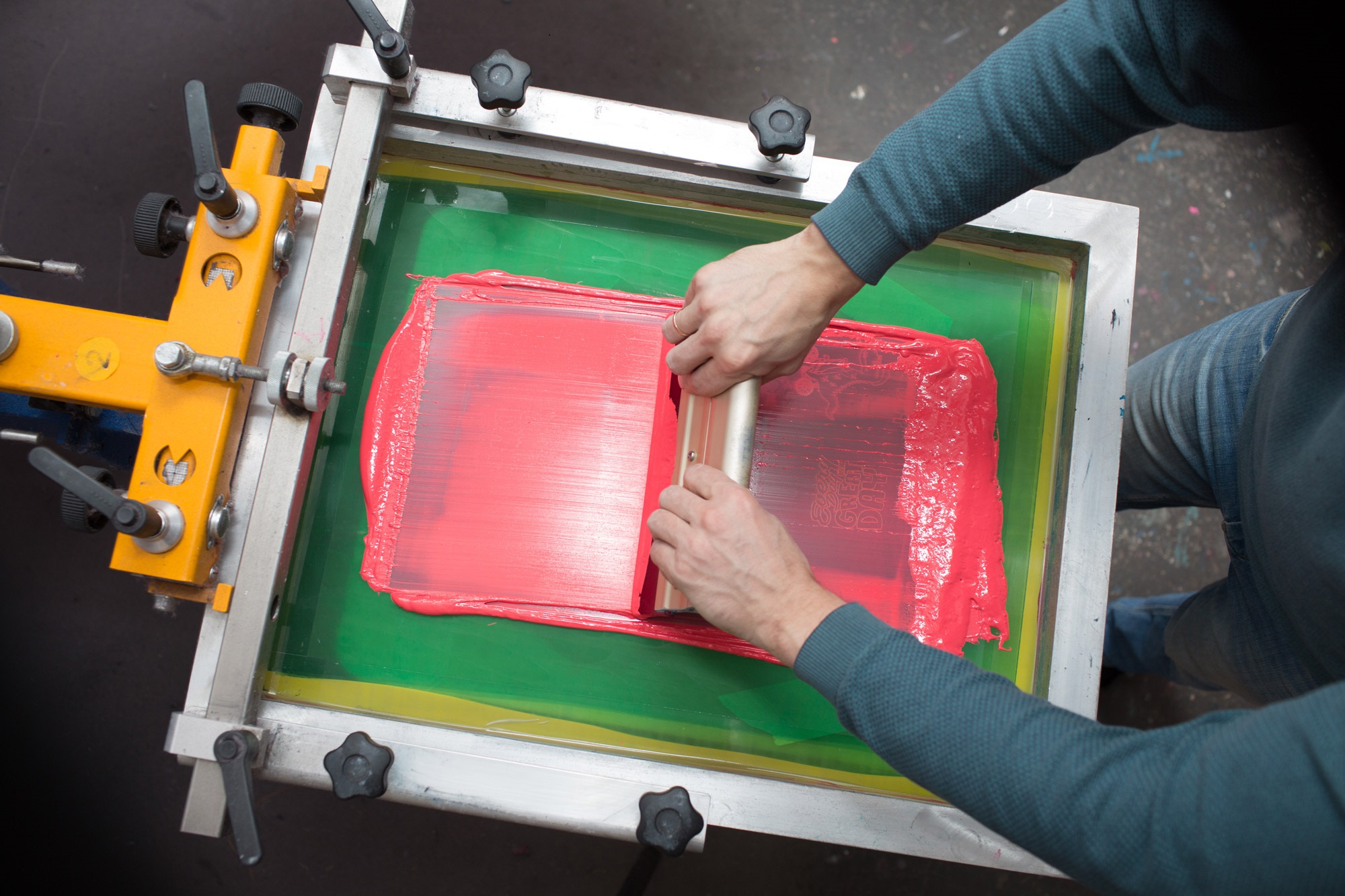The Tx Tees Ideas
Table of ContentsThe smart Trick of Tx Tees That Nobody is DiscussingMore About Tx TeesThe Main Principles Of Tx Tees An Unbiased View of Tx TeesFascination About Tx TeesTx Tees Fundamentals ExplainedNot known Facts About Tx Tees
That brings your total amount to about $1,900 gross and delivery. Add up various other expenses, like the variety of utilities it takes to run the store and the expense of ink and solution per style. embroidery shop. Take the print below. This is a one-color image, so the price of ink per t-shirt is around 20 cents.The solution ought to only be a couple of cents because you 'd just require to coat one display for this task. Normally, printers attempt to make up to 45% earnings on a print job.

With DTF, you can print a handful of t shirts, or just one. Make use of the exact same calculator as the area above to compute exactly how much profit you 'd make using DTF transfers. Compare the prices and profits to whichever technique speaks finest to your arrangement and process. Both display printing and DTF have their niches in the world.
Not known Factual Statements About Tx Tees
The finest method to recognize? Ask around and see what print shops like yours are doing. t-shirt printing. Attempt both out and see which you like far better
When you're picking what sort of printing method to use for printing your art work styles on your garments, it's essential that you understand the distinctions in between these two methods so you can maximize results while decreasing costs. Display printing is the most frequently made use of technique for printing layouts on textiles.
DTG printing is additionally referred to as place or direct to garment printing because it publishes only what is required rather than making a screen as display printers do. http://dugoutmugs01.unblog.fr/?p=3485. Screen printing functions by display filler squeegee screen printing ink screen mesh display, then transferring the photo to garment utilizing warm and/or stress
The DTG printer utilizes special dye-sublimation inks that are applied right into a pre-designed photo by an electronic printing system. The inks enter into the material, permitting vibrant shades and exceptional detail. It's additionally referred to as place or direct to garment printing due to the fact that it publishes just what is needed instead of making a screen as screen printers do.
Not known Details About Tx Tees
It's much faster - you can print a fullcolor image in mins, as opposed to hours for screen printing. Second, there's no established up time or prices included - you can print any type of layout you such as, without having to develop a display. Third, there's no waste - since screen printers screen print one style at a time, they need to evaluate each shade independently.
The paper is really expensive and can only be utilized when. Once it's printed on, it has actually to be disposed of. - The first acquisition rate is less than the upfront investment of DTG printers- You can print multi-color designs one screen at a time rather of needing to publish each shade individually like DTG printing.

6 Simple Techniques For Tx Tees
Rather of utilizing display mesh as screen printers do, dye sublimation printers make use of laser modern technology to transfer your photos onto garments or paper. A heat procedure moves the color from its solid-state straight right into the gas phase which subsequently merges it onto fabric substrates when they are rapidly heated up to high temperature levels under high stress.
Sublimation printing is eco-friendly. It uses much less water than screenprinting, and since it does not include using dangerous solvents, it's safe for all kinds of apparel. The color sublimation inks are additionally odorless when cured, unlike display printers that utilize harmful chemicals during the display printing procedure that leave behind an unpleasant odor.
They also conserve cash on costly equipment like exposure units because color sublimation printers don't need a UV direct exposure device or a flash remedy oven that is typically made use of in display printing (custom cap printing). What is straight to garment printing (DTG Printing)? DTG printing is a digital screenprinting procedure that publishes straight onto fabric making use of specialized inkjet printers
See This Report on Tx Tees
DTG printing uses many benefits over typical screenprinting, including the capacity to publish photo quality pictures, greater color vibrancy, and the capability to publish designs on darker materials. DTG printers work by heating up the textile ink till it develops into a gas. The gas after that permeates the fabric, bonding with the fibers to create a permanent print.

Screen printers have a peek at this website simply prepare their screen after that start printing until they run out of item or ink.- There is a vast array of seasoned screen printers throughout the globe, which can be handy for novices. - It's a slower procedure - display printers commonly need to wait for the ink to dry before they can print the following shade- Display printers call for hand-operated labor, so there's a higher learning curve and it takes longer to create a premium style- Screen printing isn't as exact as DTG printing, so you might obtain some "bleeding" of colors from one part of the picture onto one more if not done effectively.
The Ultimate Guide To Tx Tees
Nevertheless, as opposed to making use of display mesh as screen printers do, dye sublimation printers use laser modern technology to transfer your images onto garments or paper. A warmth procedure moves the color from its solid-state straight into the gas phase which in turn merges it onto material substratums when they are rapidly warmed to high temperatures under high pressure.
Sublimation printing is eco-friendly. It utilizes much less water than screenprinting, and because it doesn't entail using damaging solvents, it's risk-free for all kinds of apparel. The dye sublimation inks are additionally odor free when healed, unlike display printers that utilize damaging chemicals during the screen printing process that leave behind an unpleasant odor.
They also conserve cash on costly devices like direct exposure systems since color sublimation printers don't call for a UV exposure device or a flash cure oven that is commonly utilized in screen printing. What is straight to garment printing (DTG Printing)? DTG printing is an electronic screenprinting process that prints directly onto textile utilizing specialized inkjet printers.
The 7-Minute Rule for Tx Tees
DTG printing supplies several advantages over typical screenprinting, including the ability to print photo top quality images, greater shade vibrancy, and the capability to publish designs on darker fabrics. DTG printers work by heating up the fabric ink until it transforms into a gas. The gas then penetrates the textile, bonding with the fibers to produce an irreversible print.